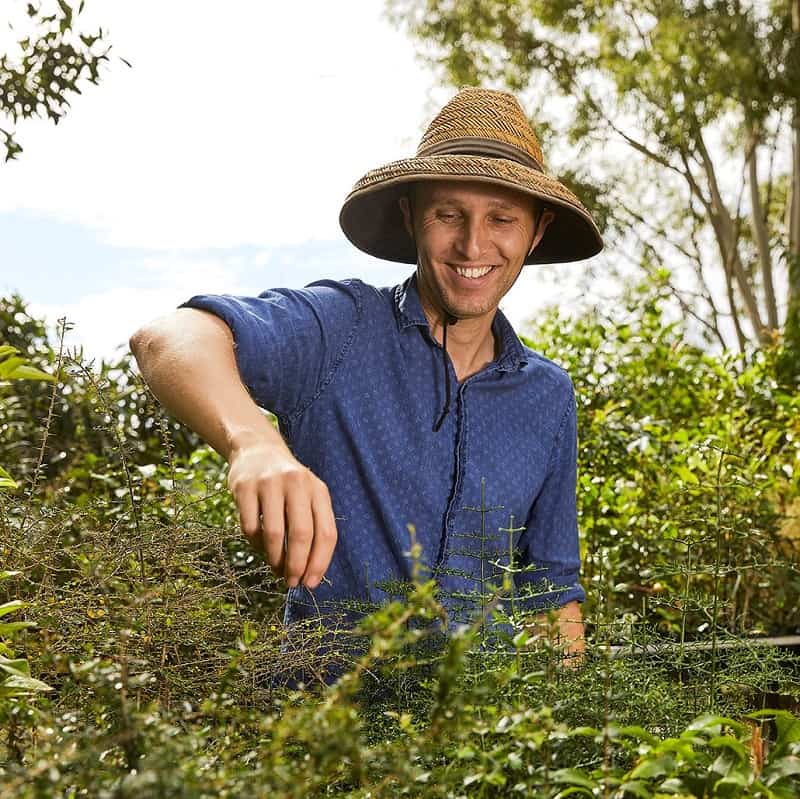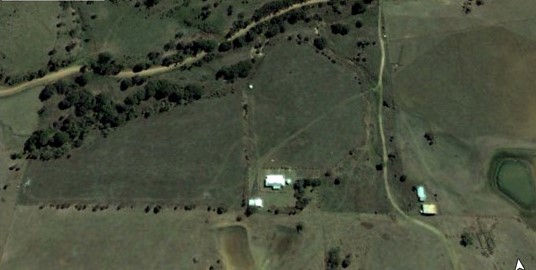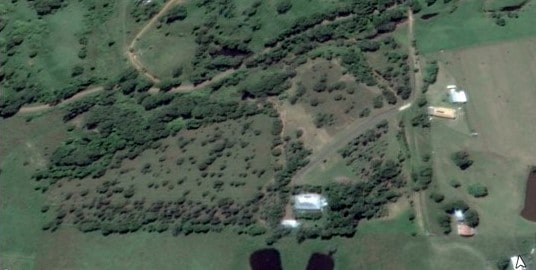For two decades this program’s free conservation assistance has not only been popular for landowners, it has also cultivated a network of environmental advocates in Ipswich and beyond.
When Chris Wiley arrived at Pine Mountain two years ago he had a massive task ahead.
His property at World’s End Pocket along the Brisbane River borders one of the largest protected areas of lowland dry rainforest remaining in southeast Queensland.
Chris is working to turn a weed-infested paddock into something of a habitat haven for native species such as Northern Brown bandicoots and threatened black-breasted button quail.
He is doing it with the help of Land for Wildlife, a voluntary program that encourages and assists landowners to manage wildlife habitat on their properties.
Two years in and Mr Wiley’s vision is starting to take off, with a range of plant species from Bell Fruit (Codonocarpus attenuates) to Round-Leaved Vine (Legnephora moorei) thriving.
And while that is rewarding, Mr Wiley is just at the beginning of this “life-long” project. He said being a member of Land for Wildlife helped with motivation through the slow process of habitat regeneration.
“I like that you have a sense you are part of something bigger than what you are doing on your property,” he said.
“You are part of a community trying to improve the environment in the local area.
“It’s quite a good information network as well, the open days and workshops are a valuable tool for landholders.”
As an ecologist, Mr Wiley said the support of council’s Land for Wildlife officers had helped in areas outside his expertise, such as pest management.
“There is always something you can learn,” he said.
Main image: Chris and partner Alister on their property, which is part of the Land for Wildlife program.
was the year Land for Wildlife launched in Southeast Queensland
Land for Wildlife properties in SEQ, covering a total 75,164ha
An example of the difference landowners can make – here are before and after aerials of an Ipswich Land for Wildlife property.
It was a group of council officers who brought Land for Wildlife to southeast Queensland in 1998, with Ipswich one of the lead councils.
Today 11 southeast Queensland councils have more than 20 Land for Wildlife officers, working collaboratively through a regional network coordinated by Healthy Land and Water.
Some of those council officers and participating landowners from Lockyer Valley, Somerset and Ipswich will be coming together to celebrate Land for Wildlife’s 20 year anniversary this month with a special event at Black Snake Creek, Marburg.
While there have been changes over the years, the program has remained true to its original purpose – to encourage and assist landholders to manage wildlife habitat on their properties.
Through it all, Land for Wildlife has remained a free and voluntary program for landowners with no legal binds on properties.
Landowners can draw on a range of support, from personalised property visits, technical information, newsletters, workshops and field days – as well as being able to tap into other council incentives such as free native plants or other resources.
A range of properties can participate in Land for Wildlife, with farms, bush blocks, parks, school grounds, golf courses, cemeteries and more all eligible.
%





